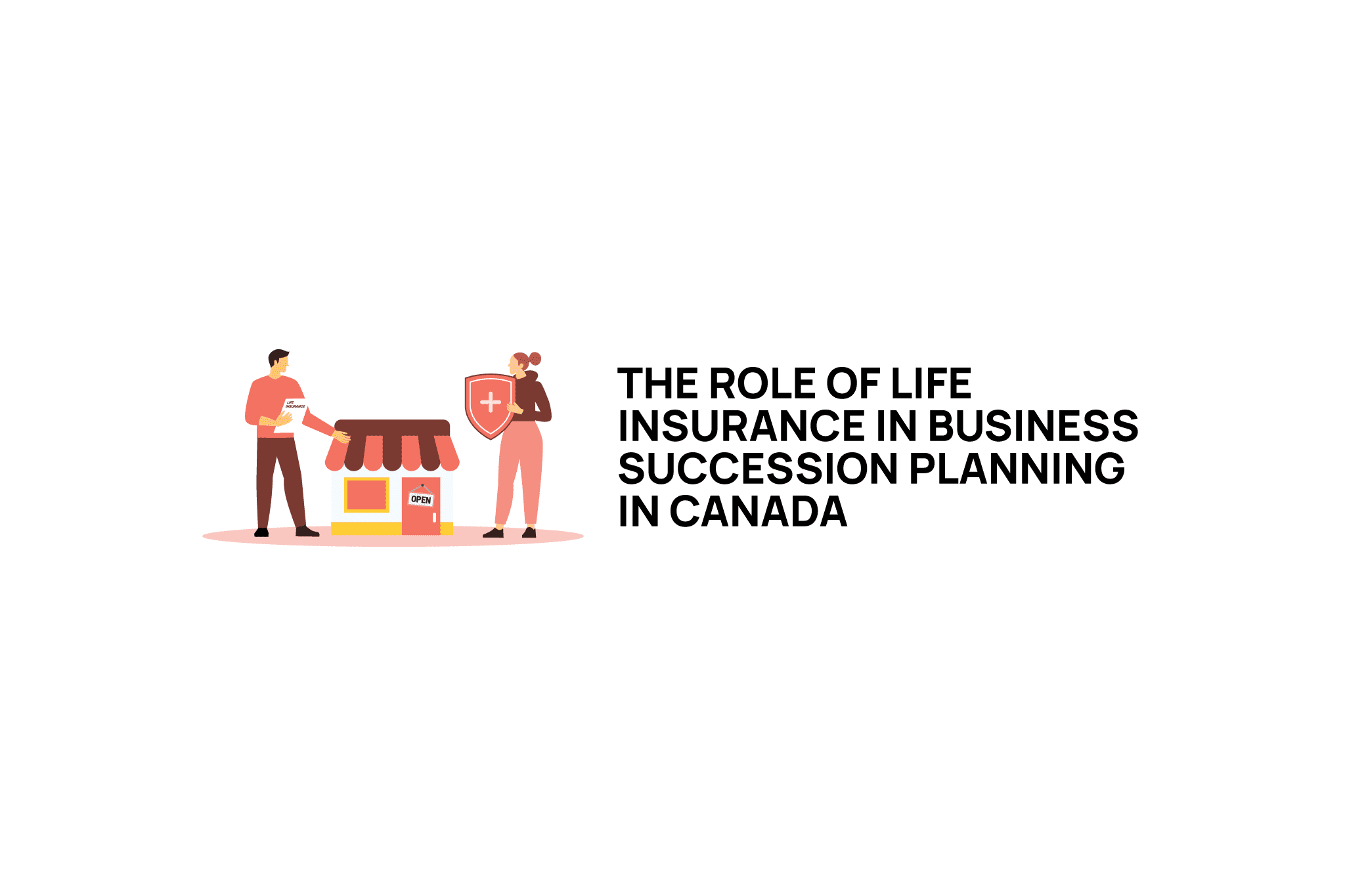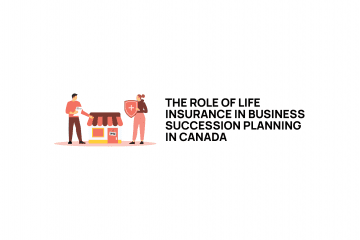To be fair, no one ever wakes up excited to think about retiring early or stepping down when unexpected situations arise. However, if you’re a business owner in Canada, succession planning isn’t just a smart idea but survival 101.
Many consider business succession planning in Canada to be the ultimate game plan. It’s a strategic blueprint that ensures a smooth transition and secures your company’s future. And when you’re ready to pass the torch without dropping it, life insurance can be a valuable addition to your process.
This article will discuss how life insurance is pivotal in business succession planning. We’ll also break down how this policy funds transitions, tackles tax considerations, and ensures your legacy stays solid.
What is Business Succession Planning?
It’s a structured process of preparing for a significant change in business leadership, ensuring that the company continues to operate when a key owner steps down.
This is similar to prepping for a relay race at the Olympics, where an athlete is on track to receive the baton. If the hand-off is smooth, the race goes on without a hitch. Likewise, having a succession plan improves your business’ chance of operating for generations to come.
So, why is succession planning essential? According to a Deloitte study, many firm owners don’t manage the transition to a successor leadership team. In fact, in family-owned enterprises, only 30% survive into the second generation, and only 12% survive into the third and beyond.
This statistic reinforces the need to have a plan for your firm. In Canada, business succession comes in various forms:
1. Family Transfers
In this form of succession planning, the business is passed down to the next generation, often a child, sibling, or a close relative. This ensures the firm’s legacy continues even when the key person is no more.
2. Partner Buyout
One of the partner’s exit (voluntary or involuntary) may be dealt with by buying out their shares.
3. Third-Party Sale
Here, the owners sell the entire enterprise to a third party.
Without a proper business succession plan, regardless of its form, business owners leave their enterprises at risk of:
- Operational Disruptions: Surprise departures can create gaps in leadership.
- Financial Strain: The inability to access cash immediately may require companies to sell assets under duress.
- Family Conflicts: In family-owned businesses, unintended transfers may create conflicts between heirs.
Indeed, you don’t want these problems as you pursue your business continuity. So, having a business succession plan ensures your firm goals are clear, even when you’re not there. It also provides stakeholders with their assigned roles and responsibilities.

How Life Insurance Contributes to Succession Planning
Life Insurance is the Swiss Army knife of succession planning, and it plays an important role that’s too good to ignore. Businesses may want to own life insurance for a few reasons, including receiving liquidity needed to keep operations running or requiring assistance with tax payments.
Below are a few ways life insurance is crucial for your succession plan.
1. Funding Buy-Sell Agreements
A buy-sell agreement is like a pre-set rule for the game. It’s a legal contract that outlines what happens if an owner dies or becomes incapacitated. This provides the cash that other stakeholders or partners need to buy the departing owner’s shares.
This policy ensures that money is on the table, thereby preventing the forced sale of the business to a third party.
2. Protecting Against Financial Loss
Losing a key player, like a founder, can threaten a company’s operational structure. And if the business doesn’t have enough liquidity to stay afloat, there might be a problem. Think frozen accounts, panicked clients, or awkward calls to the bank.
Life insurance provides immediate funds to replace lost revenue and manage the transitioning process.
3. Maintaining Liquidity to Facilitate Tax Payments
Tax season in Canada can be exciting or challenging for businesses. However, life insurance can provide firms with the needed cash to cover their tax obligations. This move prevents companies from liquidating crucial assets.
4. Equalizing Inheritance
Not all heirs may want to be involved with the family business. Life insurance can help balance interests between interested and uninterested heirs of the enterprise. It also avoids conflicts and distributes wealth appropriately, keeping feuds out of the boardroom.
For more insights, check out our guide to determine if life insurance is worth it.
Types of Life Insurance Used in Succession Planning
Life insurance is a game-changer, but not all policies are equal. They cater to various needs, and choosing the right one can help your business run smoothly even when unexpected events occur. Here are the major kinds used in business succession planning in Canada:
1. Term Life Insurance
Term life insurance is an affordable policy that offers coverage for a specific period. It’s appropriate when a business needs protection within a defined time frame.
2. Permanent Life Insurance
Permanent life insurance (either whole or universal) remains in effect throughout one’s life. It accumulates cash value over time that can cover unexpected situations or investments. Many savvy business owners usually opt for this policy for long-term protection.
3. Corporate-Owned Life Insurance (COLI)
Corporate-owned life insurance is popular among Canadian businesses seeking to protect their succession plans. In this arrangement, the corporation owns the policy on key individuals, pays the premiums, and receives the tax-free benefit (a win-win-win situation). Thus, partners can use the funds to finance buy-sell arrangements or pay off business loans.
4. Joint Last-to-Die Policies
This type of life insurance is used in family-run businesses and estate planning. They pay out upon the death of the last insured person, keeping the business running smoothly despite uneventful situations.
Get a free quote
Buy-Sell Agreements and Life Insurance: Do They Differ?
A buy-sell agreement is a legally binding contract detailing what happens to a business owner’s share upon departure. It provides a clear plan that ensures a smooth transition and protects the firm’s interests.
A typical buy-sell agreement outlines:
- The Triggering Events: These include death, disability, or retirement.
- Valuation Method: A transparent process to determine the business’ worth.
- Funding Mechanism: The process for buying out the departing owner’s share.
What about life insurance? When added into a buy-sell agreement, it provides the liquidity required to buy out a departing owner. As a financial tool in business continuation planning, it also covers tax liabilities and protects against financial losses.
There are two models for life insurance in a buy-sell agreement:
1. Share Redemption:
This is a straightforward model in which the company buys back the exiting owner’s shares from the insurance proceeds.
2. Cross-Purchase Agreement:
The remaining owners purchase the shares directly, offering more control over the process.
Each of these models has strengths and downsides. Regardless of your choice, they help preserve company control and protect the business from financial risks.
To further clarify this point, imagine three partners sharing a drafted buy-sell agreement. Owner A, a key driver of the company’s prosperity, suddenly dies. The life insurance policy covering this partner pays out immediately, supplying owners B and C with the funds to buy the deceased’s shares.
This measure keeps the business operational and provides Owner A’s family with financial support at this challenging time.
Canadian Tax Implications and Legal Considerations
Canadian tax rules are complicated and can be tricky to figure out. However, there are tax benefits associated with life insurance that can ease the burden.
1. Free Death Benefit and the Capital Dividend Account (CDA)
A well-planned life insurance policy can grant a tax-free death payment. In Canada, the cash can be paid into the Capital Dividend Account. This allows for tax-free distribution to shareholders. It’s like finding a $20 bill in your ski jacket. Feels good, right?
Now imagine pulling out a $200,000 check with no taxes or strings attached! That’s the power of leveraging life insurance and CDA in succession planning.
2. Policy Ownership: Corporate vs. Personal
People often make mistakes when buying life insurance, which affects their reputation and business. Thus, deciding who should own the life policy isn’t always easy. In Canada, when a company chooses corporate-owned life insurance, it retains the policy and receives the death benefit.
Alternatively, an individual may hold the personal policy and assign it to the business later. It’s vital to note that there are unique tax consequences to each strategy. It’s best to consult with your tax professionals to decide what structure fits best for you.
3. Premium Payments and Payout
These policy premiums are paid with after-tax dollars. If set up properly, your cash value inside the policy grows tax-free. In some advanced setups, these premiums might even qualify for deductions. But don’t forget to comply with Canada Revenue Agency (CRA) rules.
CRA rules apply to life insurance, and compliance is essential to avoid penalties and maximize tax benefits. So, review your policy occasionally and consult with financial experts to ensure you’re on the right side of the law.

A Sample Case Study
Business succession planning in Canada can be a bit of a headscratcher. But don’t worry; here’s a hypothetical example that best illustrates how life insurance can be game-changing.
Consider John, a seasoned entrepreneur who founded Maple Lead Manufacturing 30 years ago in Ontario. It quickly became a pillar of the local community. He established a family-owned business to ensure a smooth leadership transition for his children.
Before long, John knew that even the best plan needed a safety net. He met with his financial advisor, and they set up key strategies:
- They created a buy-sell agreement life policy. This means the business will take out a policy on John’s life to fund a buyout in the case of an emergency.
- They also utilized corporate-owned life insurance in Canada as extra protection.
When John retired at 65, the plan served its purpose. The policy was paid, and the money was used to buy out John’s shares. The funds were added to the company’s Capital Dividend Account, making them tax-free for distribution to his heirs.
This well-thought-out plan kept the business running smoothly and maintained family harmony. Now, that’s a reason for John to smile.
Getting Started with Business Succession Planning
Now that you see the value, it’s time to roll up your sleeves and start planning your succession. Initiating this process sounds daunting, but you can manage it and make it work well for your business with the right steps.
1. Involve key Professionals
Building a solid plan is a team sport. You’ll need:
- A licensed insurance broker specializing in life insurance for business owners to guide you in choosing the right policy.
- A lawyer who can draft and review buy-sell agreements.
- An accountant to help plan the finances and navigate CRA nuances.
- A financial advisor who agrees with your long-term vision and ensures comprehensive business continuation planning.
This is where our in-house financial experts at LifeInsuranceCanada.com come in. We offer tailored strategies for business-owner life insurance, guidance on buy-sell agreement policies, and expert advice to help your company succeed for future generations.
2. Have a Written Plan and Regularly Review It
Your succession plan should be a live document where you can specify your plans. It should explicitly include:
- Trigger events (retirement, death, or disability)
- The process of acquisition of an owner’s share.
- The roles and responsibilities of all concerned.
- Allocation of life insurance proceeds.
Regular reviews are also crucial. As your business grows and the Canadian market adjusts, you must revise your plan to account for emerging threats and opportunities.
Make Your Business Succession Plan Unstoppable
The financial world is unpredictable, and your business’s fate is all in your hands right now. As discussed so far, succession planning isn’t all doom and gloom. It’s about building a legacy even when you’re no longer around or when life throws a curveball.
Adding life insurance into the mix gives your business the gift of continuity, your family the sense of security, and you the peace of mind that your vision won’t vanish. So, take action today by reviewing your succession plan.
Need help? Contact us at LifeInsuranceCanada to schedule a consultation with a licensed advisor or get a free quote. Let’s create a succession plan that protects your business for generations and puts your mind at rest.
Frequently Asked Questions (FAQs)
What is business succession planning?
Business succession planning is a strategic process that prepares your business for the next transition when you retire, become disabled, or pass away. It ensures that operations continue running smoothly for generations to come.
Why is life insurance important in business succession planning?
Life insurance provides essential liquidity to fund buy-sell agreements, cover tax obligations, and protect against financial losses, making it a crucial component of business continuation planning.
How do I get started with business succession planning?
First, consult with key professionals such as insurance brokers, lawyers, accountants, and financial advisors. Then, create a clear, written plan that outlines trigger events, buyout processes, and regular review procedures.




